Although Haeinsa, the most significant Buddhist temple in all of Korea, is tucked away on the slopes of Mount Gaya, this architectural and spiritual gem can be visited on an easy day trip from various cities like Busan and Gyeongju even by public transport.
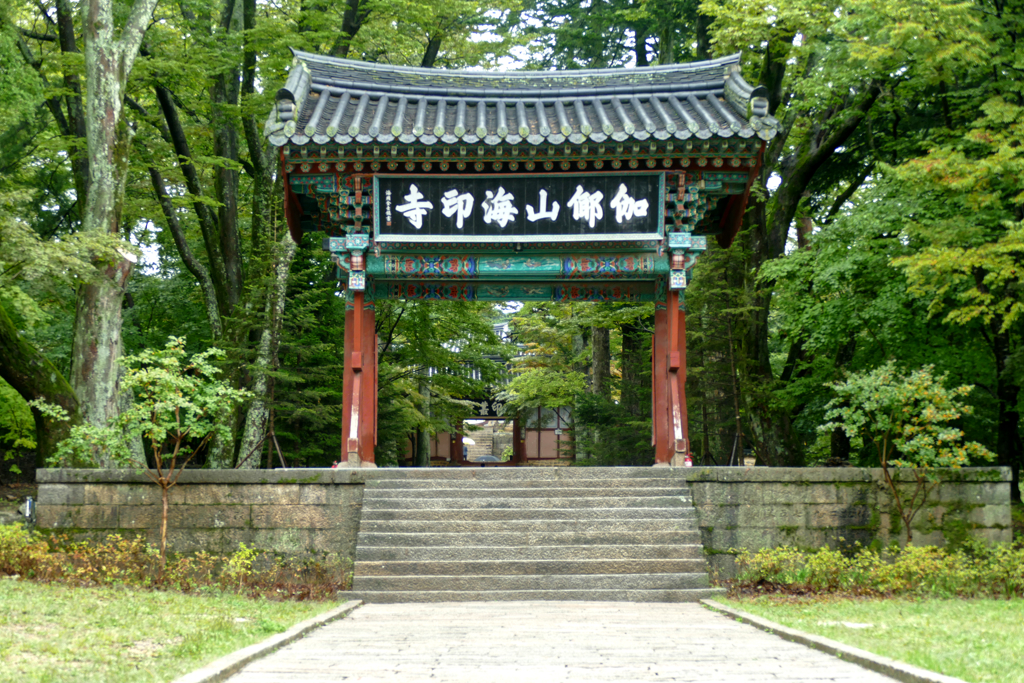
Two Floors Down
I’m at the wrong station. Or let me rephrase it: I’m at a different station. The bus I took from Gyeongju was supposed to arrive at Seobu Bus Terminal. But this is DongDaegu Station.
No biggie, I ask at the ticket counter how to get to Seobu.
The lady behind the glass shield smiles and points out the obvious: Other station.
Yahaa, this much I know. Take subway. Two Floors Down. She points her index finger downwards in case I’m not familiar with the term down.
Okay, but which line?
Subway. Two Floors Down, she giggles sheepishly.
Right, I understand, but in which direction should I go? At which stop should I get off?
Two Floors Down. Subway.
Does she take me for some kind of idiot and assumes that by now I didn’t understand that I need to take the subway which supposedly departs two levels below this one?
I try to inquire for a last time which line should take me to which station to which she replies…
I don’t even wait anymore for her answer and take the escalator two floors down.
There I am standing a bit lost between various convenience stores and a big system map. Also, there is a bookstore. I know it’s a bit preposterous to think people will speak fluently English just because they are selling books. But as it turns out, the two ladies indeed do have some rudimentary knowledge of English and manage to send me to the correct underpass where a group of elegant elderly ladies sees me searching for the right tracks, and they kinda take me under their wings.
Travelling On
We ride in the same direction, the ladies and I, and they never tire of pointing out to me the number of stops left at each station. When we are still five stops away from my final destination, the elegant group leaves the compartment with one last note – now five more – and I am on my own. Yep, I can do that.
After five more stops, I get off at the intercity bus station which is much smaller and older and far more run-down than the glamorous express bus station I just came from.
I don’t care.
I buy a ticket to the Haeinsa Temple, get reassurances several times that there are many buses back, and then I climb into a bus that is also small and old and quite run down.
Let my personal pilgrimage continue.
Haeinsa Temple
Haeinsa is one of the main temples of the Jogye Buddhist order and is located on the slope of Mount Gaya near the city of Daegu. It is actually one of the three Temples of the Three Jewels.
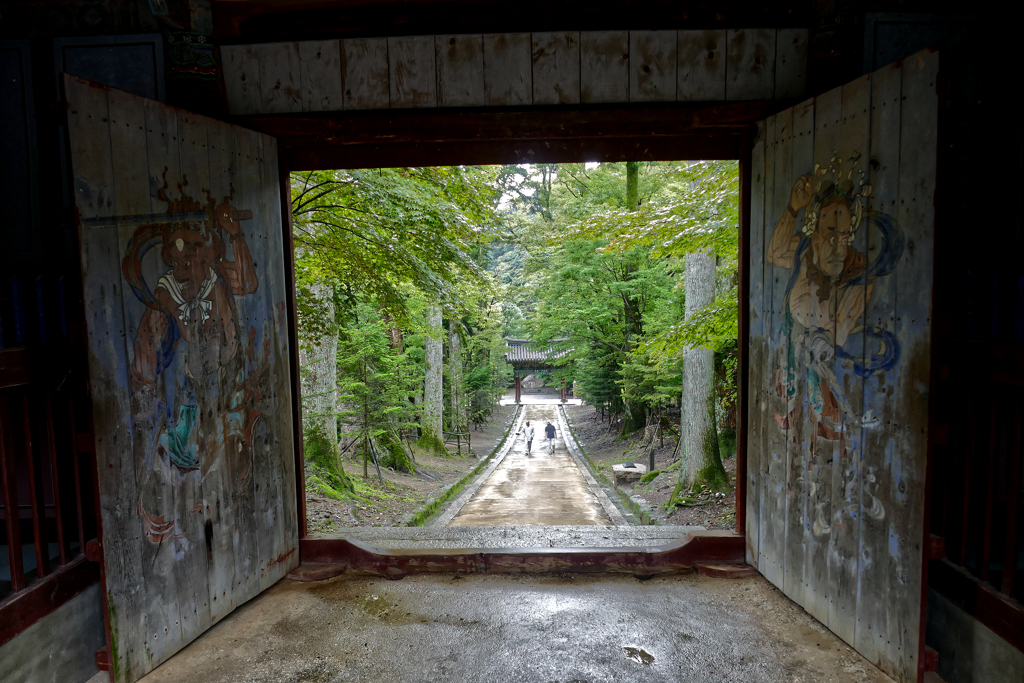
The temple was founded in 802. According to legend, the wife of King Aejang, the 40th ruler of the Korean kingdom of Silla, was seriously ill. After she returned to Korea from China, the Buddhist monk Suneung and his disciple Ijeong healed her. In gratitude, the King ordered the temple to be built.
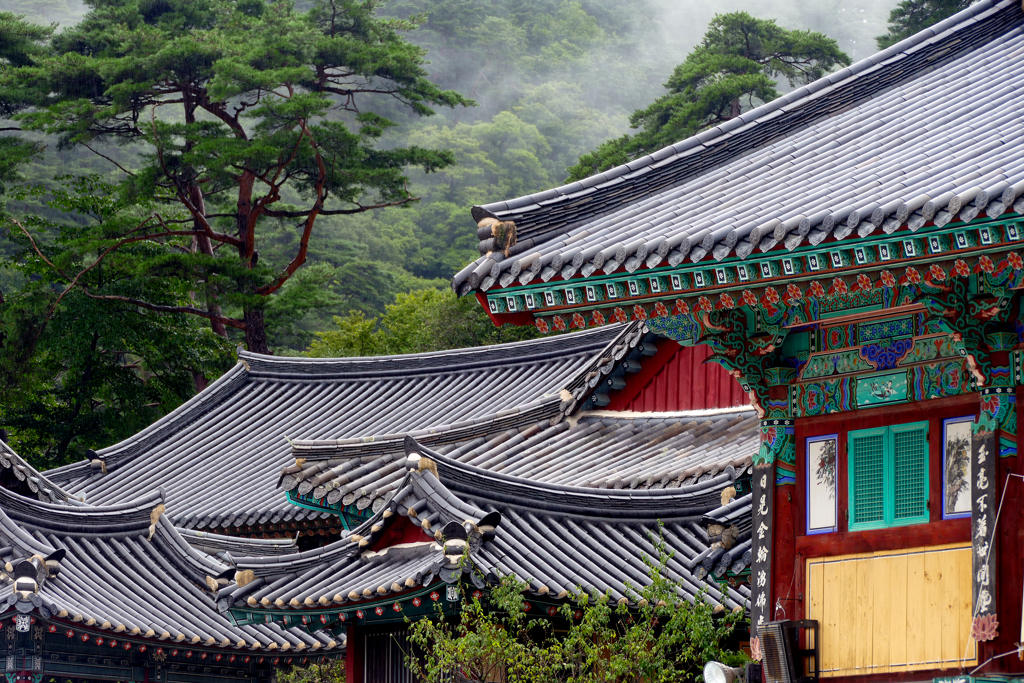
During the Goryeo Empire in the 10th century, a complete renovation of the temple complex took place. Over the centuries, further renovations followed.
In 1817 the complex burned down almost completely and had to be rebuilt in the following years.
During the Korean War, a North Korean unit of around 1,000 soldiers managed to entrench themselves in the area of the Haeinsa temple in 1951. The temple should therefore be bombed. However, the Korean colonel and coordinator of the operation refused to implement the US military’s order of total destruction. In the end, his risky refusal to obey orders saved this precious temple complex.
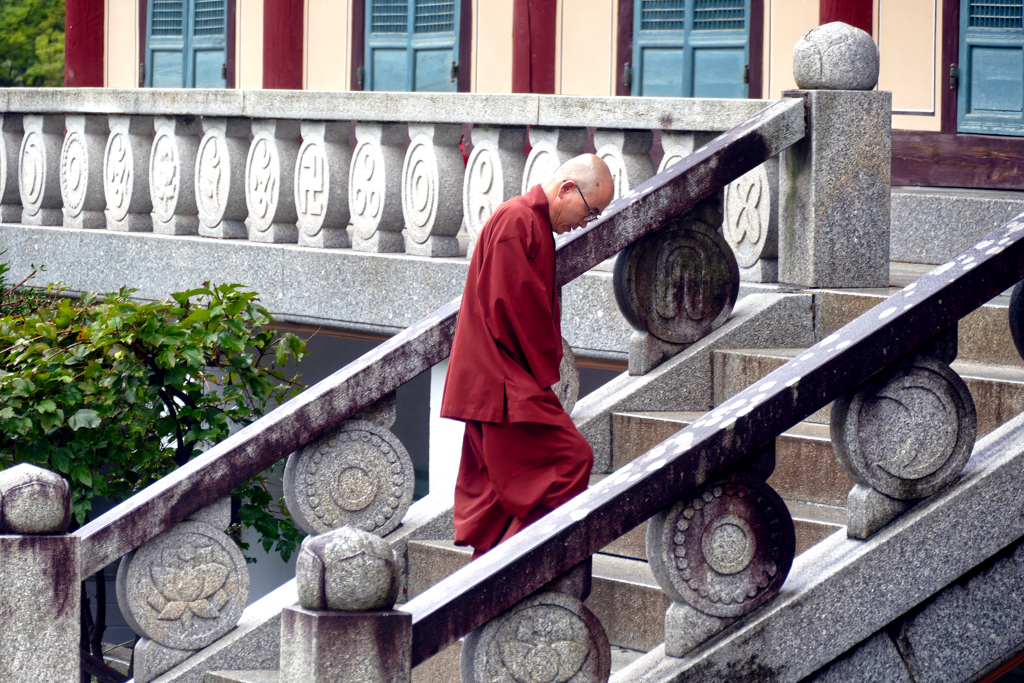
And so the temple is still used today and houses the Seon Monastery. It was also the residence of the influential Zen master Seongcheol, who introduced major reforms to Buddhism in Korea. Seongcheol died in Haeinsa in 1993.
Tripitaka Koreana
What gives the temple an invaluable significance is the so-called Tripitaka Koreana. The Tripitaka are print templates for one of the largest collections of Buddhist scriptures that are carved onto wooden printing blocks. Today’s collection consists of an incredible 81,258 tablets and has been stored at Haeinsa since 1398.
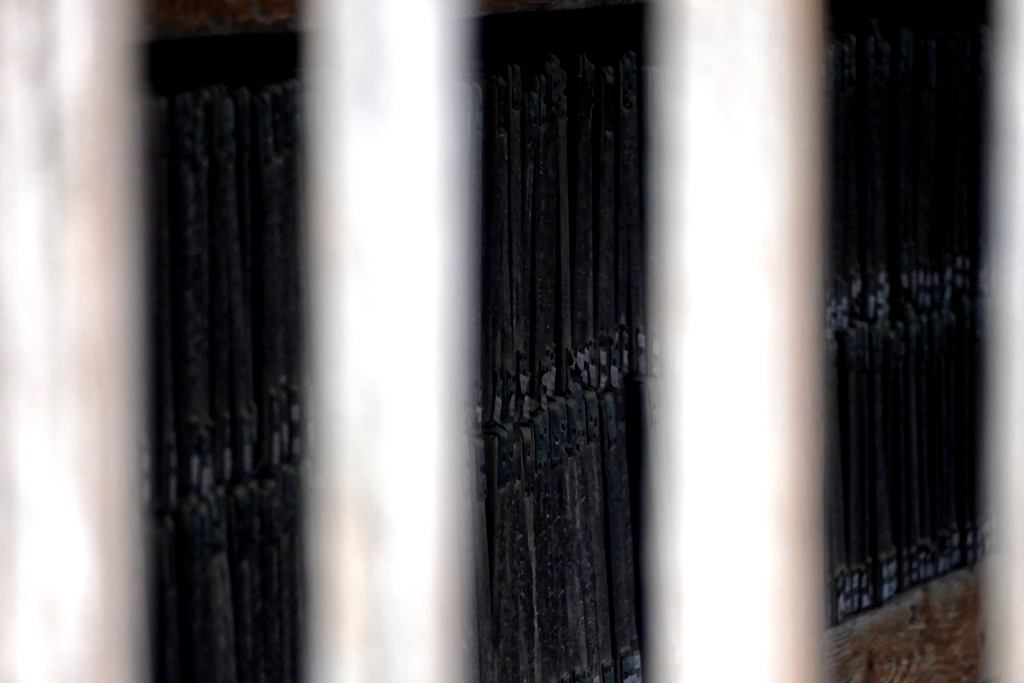
The first edition was created in the early 11th century. Sadly, this earliest set of woodblocks was destroyed by fire during the Mongol invasions of Korea in 1232. Eventually, King Gojong ordered another edition which was completed in 1249.
Only particularly hard-wearing types of wood, mainly cherry and pear, were used for the panels. To give the wood additional durability, it was boiled in salt water. It was then dried very slowly and gently to avoid cracks in the material.
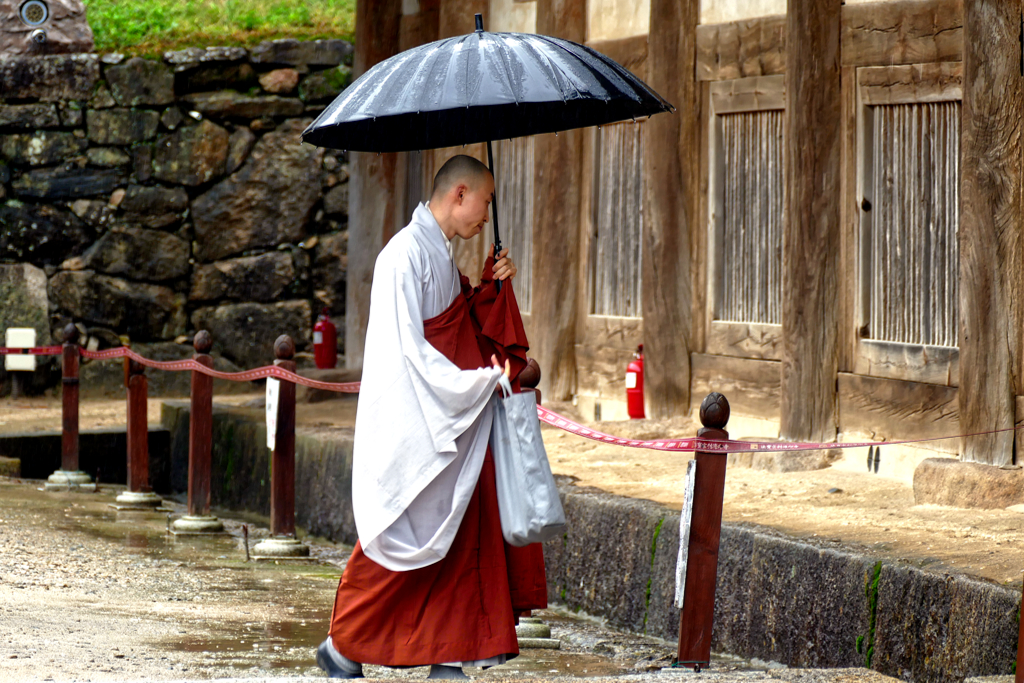
So far, no errors and no subsequent corrections could be found on the printing plates which were replicated based on surviving prints. Today, they are kept in the temple’s Janggyeong Panjeon under optimal storage conditions.
In 1995 the temple complex was declared a World Heritage Site by UNESCO.
Plan Your Visit
By the time the bus had reached the entrance to the temple complex at Mount Gaya, it was pouring, and the lush sceneries were wrapped in mysterious wafts of mist.
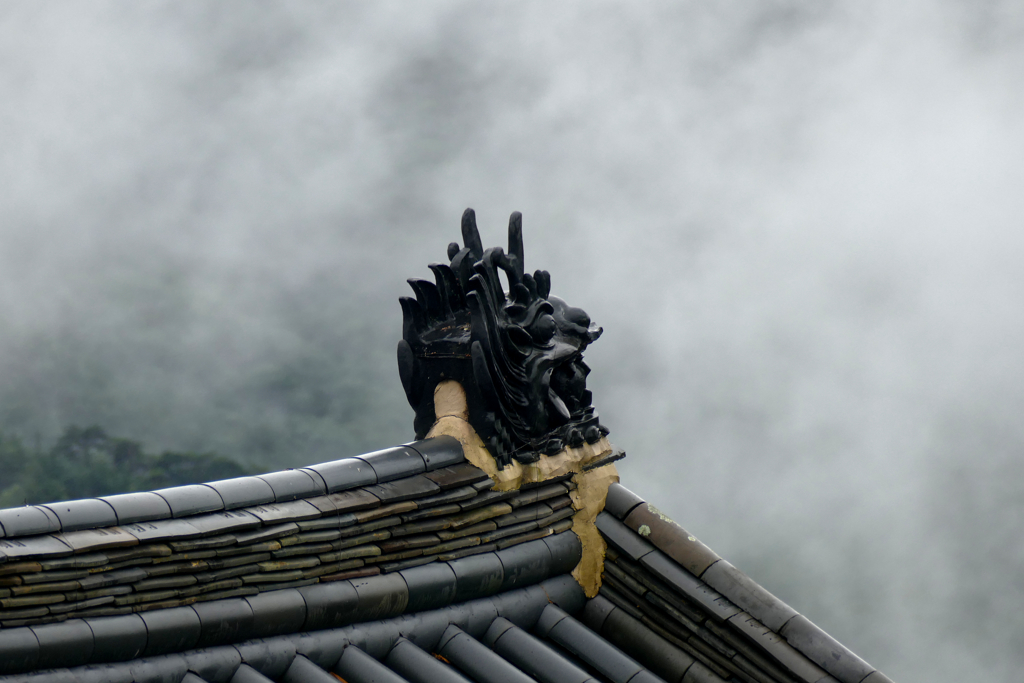
To get to the temple, you first need to walk for about fifteen minutes through a well-signposted forest. The fact that some signs warn about wild boars gives the walk a special thrill.
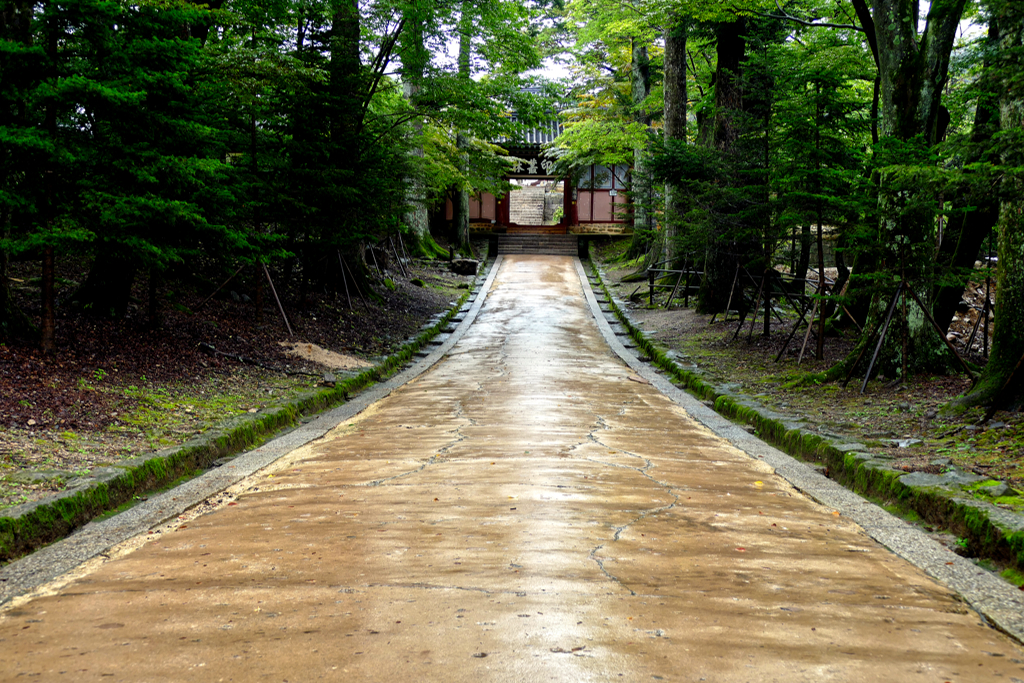
Following the long entrance path, you’ll reach the first level of Haeinsa Temple passing through the so-called Bullimun. This lower level consists of about a dozen halls. Some of them house administration offices, others are the monks’ quarters.
In the center of this first tier is a Buddhist labyrinth. This so-called Haeindo is based on a poem written by the monk Uisang as early as the 7th century. Following Buddhist principles, Uisang’s ode consists of 210 characters which are arranged in 30 lines.
During your spiritual walk through the maze, you have the opportunity to chant the Song of Dharma Nature. The lyrics are available in both Korean and English.
The walk through the maze begins and ends at the very same spot, symbolizing the world as a singularity.
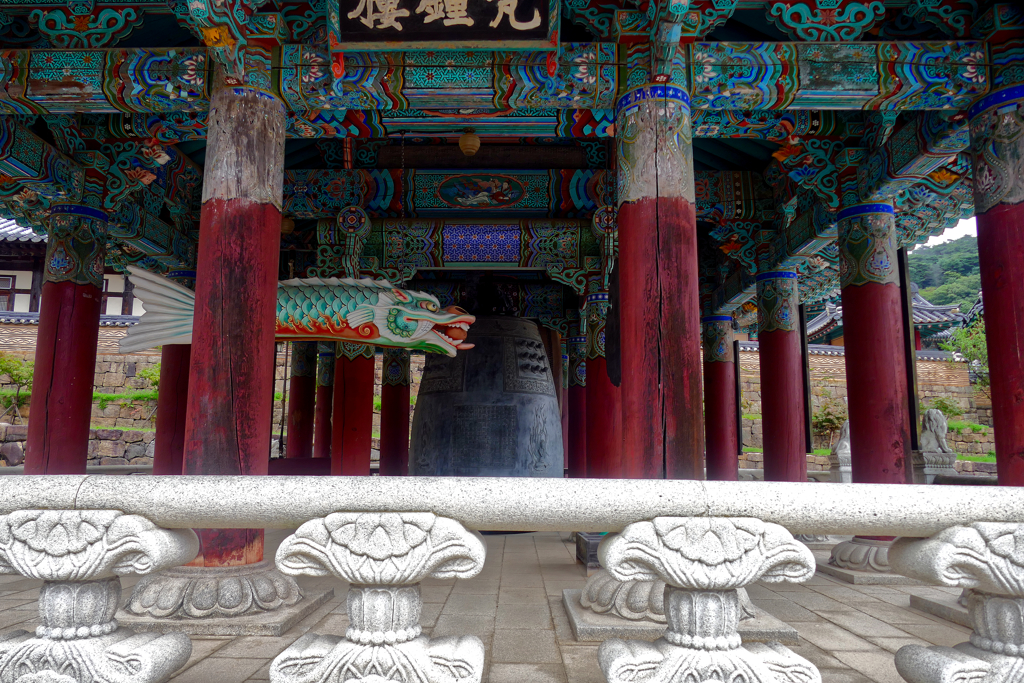
Next to the maze is a pavilion where four traditional instruments called Samul are kept. They represent the different groups of beings in the universe: The large bell stands for beings who live on earth, the big drum embodies beings in heaven and hell, the wooden fish cleverly represents the beings in water, and the gong symbolizes the beings in the sky.
Two monks play these instruments twice every day.
Second Level
The most prominent feature of the second level is the Daejeokgwang-jeon, hence, the Great Hall of Great Tranquility and Light. Eight scenes from Buddha’s life adorn the outside walls. A statue of the Buddha of Cosmic Energy is resting on the main altar.
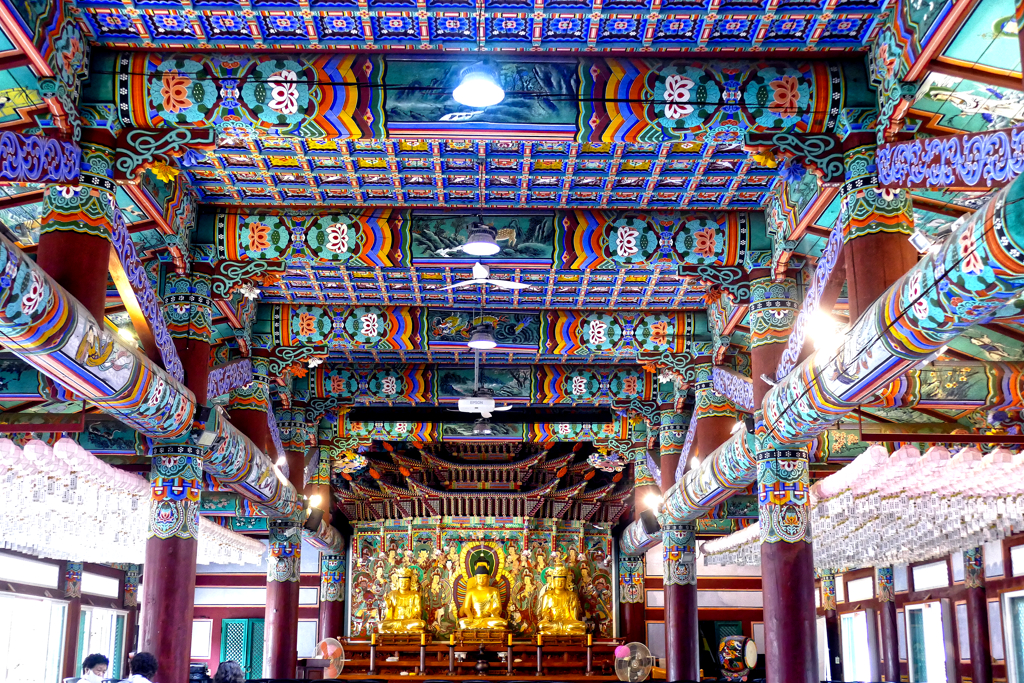
Daejeokgwang-jeon is where the monks in residence meet for prayer in the early morning and evening before bedtime to chant together.
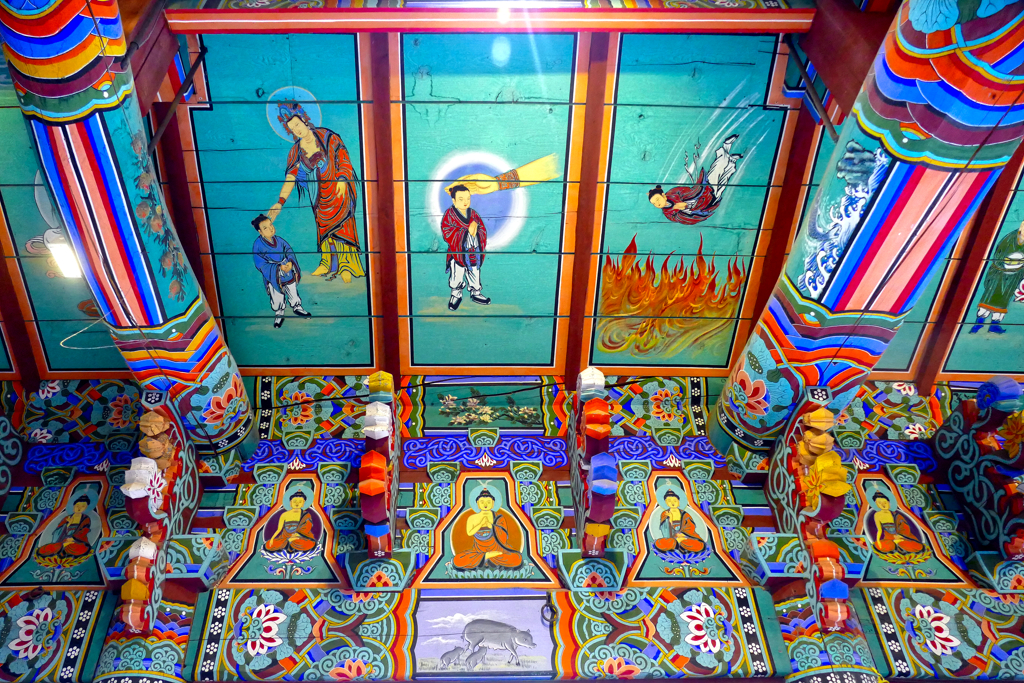
To the left side of Daejeokgwang-jeon, you will find the so-called Daebirojeon. This hall houses a pair of wooden Buddha statues.
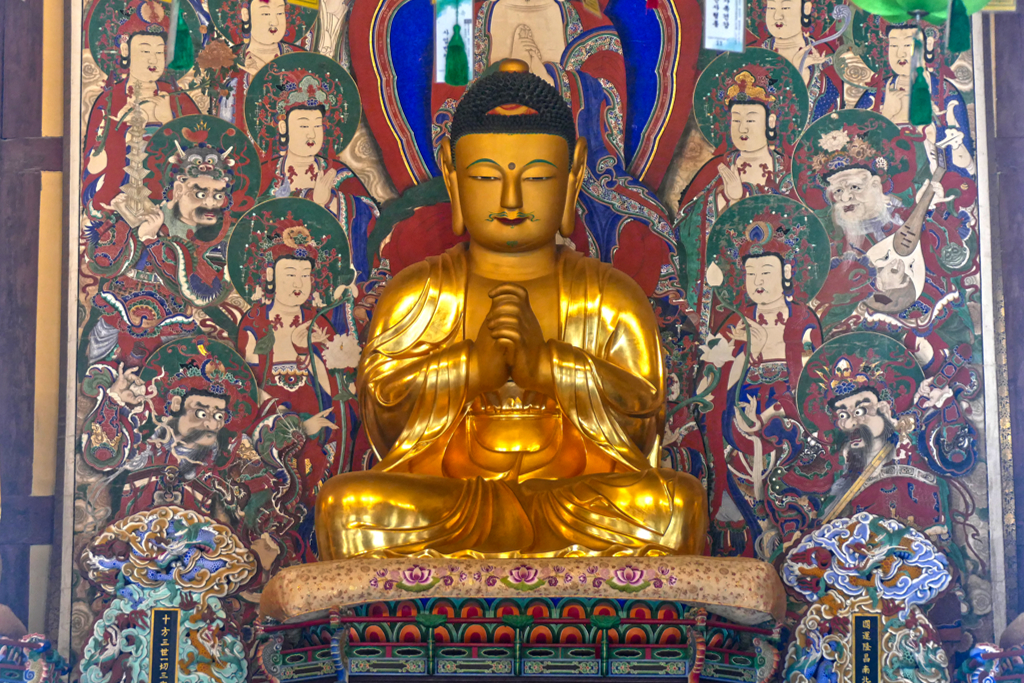
These two sculptures are the oldest wooden images of their kind in Korea as they date back to the 9th century. Supposedly, they have treasures hidden in their bellies.
Third Level
I’d argue that this is the area of why the vast majority of tourists visit the Heinsa Temple. The four storage halls known as Janggyeong Panjeon are arranged in a rectangle around an inner courtyard. They are the depository for the precious Tripitaka Koreana woodblocks, obviously.
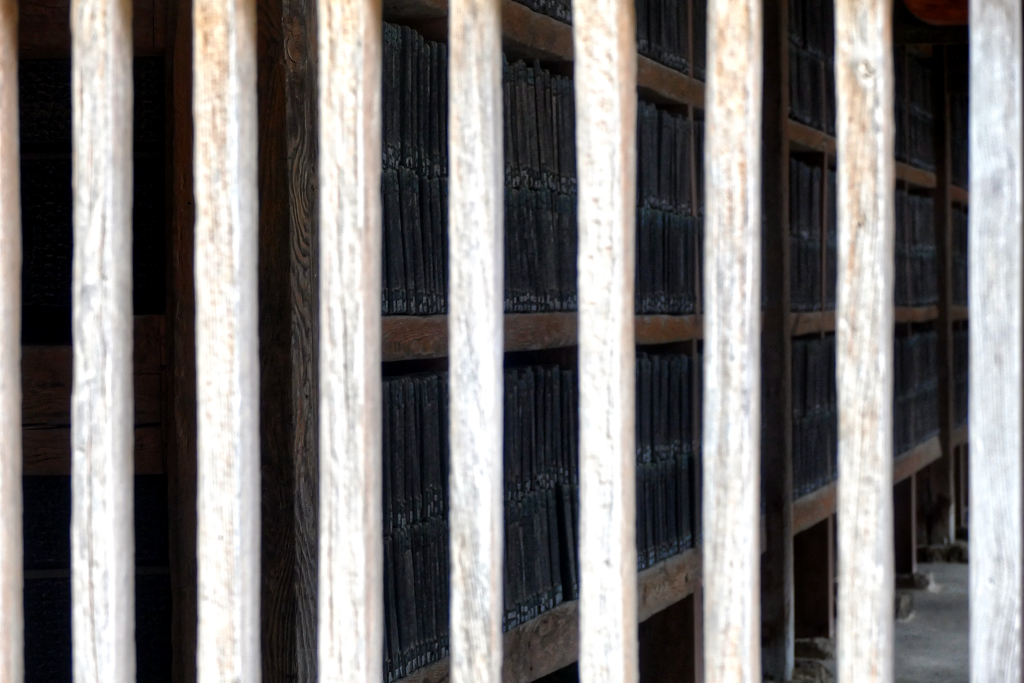
The foundation of this oldest section of the temple complex consists of layers of salt, charcoal, lime, and sand. This is a measure to reduce humidity that would destroy the holy woodblocks. The building also faces southwest to shade the blocks from direct sunlight.
Since the blocks are so precious yet so fragile, they have been off-limits to the general public for centuries. Nevertheless, since 2021, visitors have been able to see the collection under certain circumstances. Every Saturday and Sunday, a limited group of visitors can see the treasure at 10 a.m. as well as at 2 p.m.
You can book a guided tour through the pre-booking tour system on the temple’s website. Bookings are available until noon every Monday. Those who got a spot will receive a confirmation by text message to their cell phone. Reservations are limited to one spot per person, and young children have no access.
An even more impressive way of getting a glimpse at the Tripitaka Koreana is during the Dharma festival held every spring around the Haeinsa Temple. For more information, please go the the website quoted above.
Regardless of the special visit of the Tripitaka Koreana, the Haeinsa Temple can be visited daily from 8.30 a.m. to 6 p.m. free of charge.
How to Get There
Haeinsa is located about 70 kilometers west of Daegu in Gayasan National Park. To get there by public transport, you need to take the bus at Daegu’s Seobu Bus Stop. Coaches are going by the hour between around 8 a.m. and 8 p.m. You can buy your ticket at the counter.
Now, if you’re not staying in Daegu, you can first get there comfortably by train from Busan. The ride is only a bit over an hour and sets you back around KR₩ 15,000. If you are coming all the way from Seoul, you should hop on a KTX train which only takes a bit over two hours, but costs around KR₩ 43,000.
However, I visited the Haeinsa Temple on a day trip from Gyeongju. From there, express as well as intercity buses take you to Daegu in about one hour. If you take the express bus, you have to continue by subway #1 from the Dongdaegu terminal to the Seobu bus station.
Where to Stay
When the complex closes at 6 p.m., you don’t necessarily need to go home, as Haeinsa offers a fantastic temple stay program. Obviously, it is far more than just a roof over your head, but a deep and meaningful experience. For around 100,000 ₩on, the temple stay program includes meditation, praying, and various other activities.
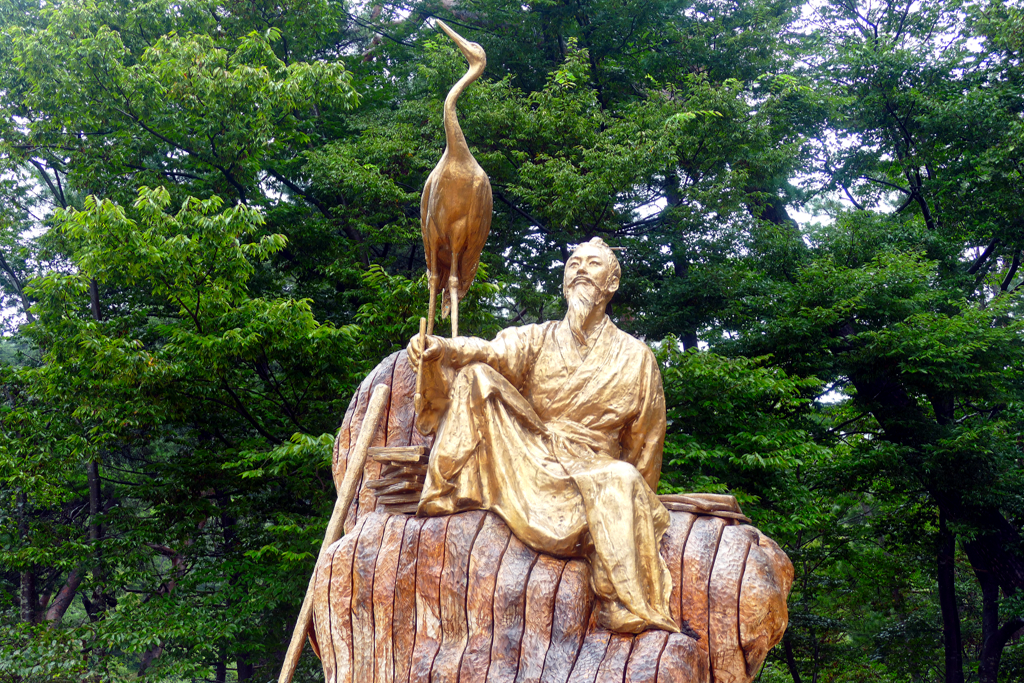
If you’re interested in this truly unique experience, you’ll find all the details on their website.
Obviously, it is also possible to stay overnight in the nearby city of Daegu, and you’ll find a suitable lodging option on this map*:
Pinnable Pictures
If you choose to pin this post, please use one of these pictures
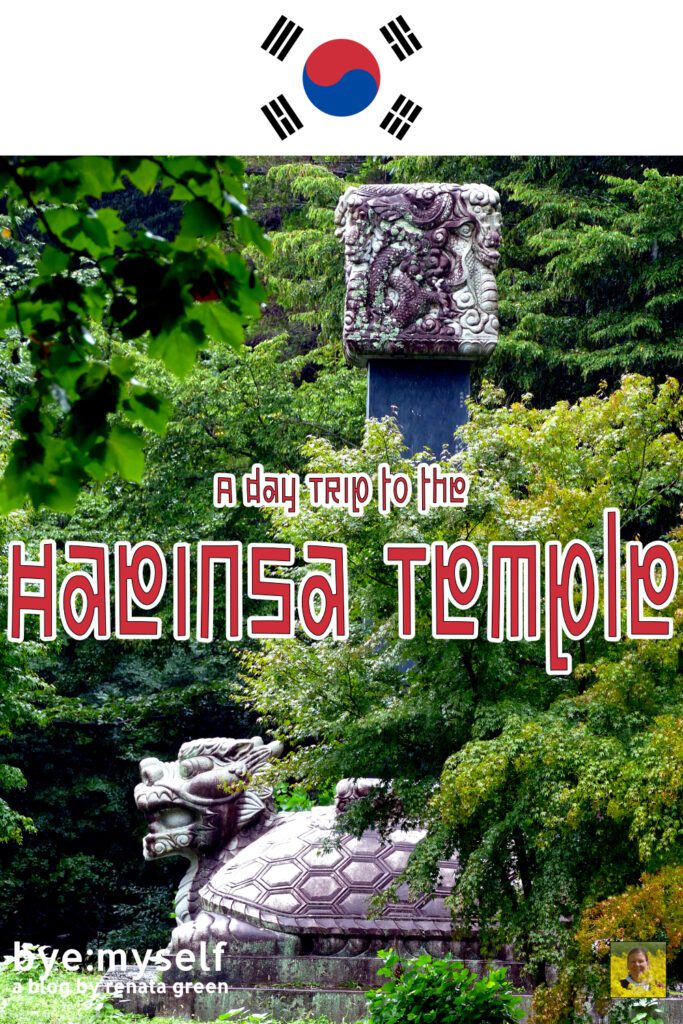
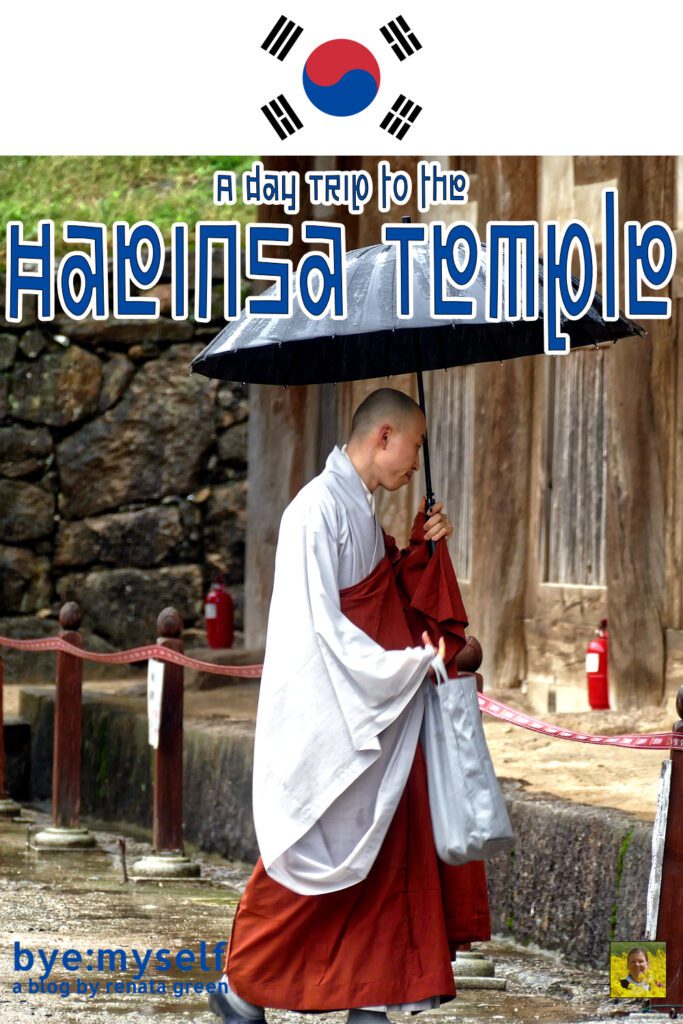
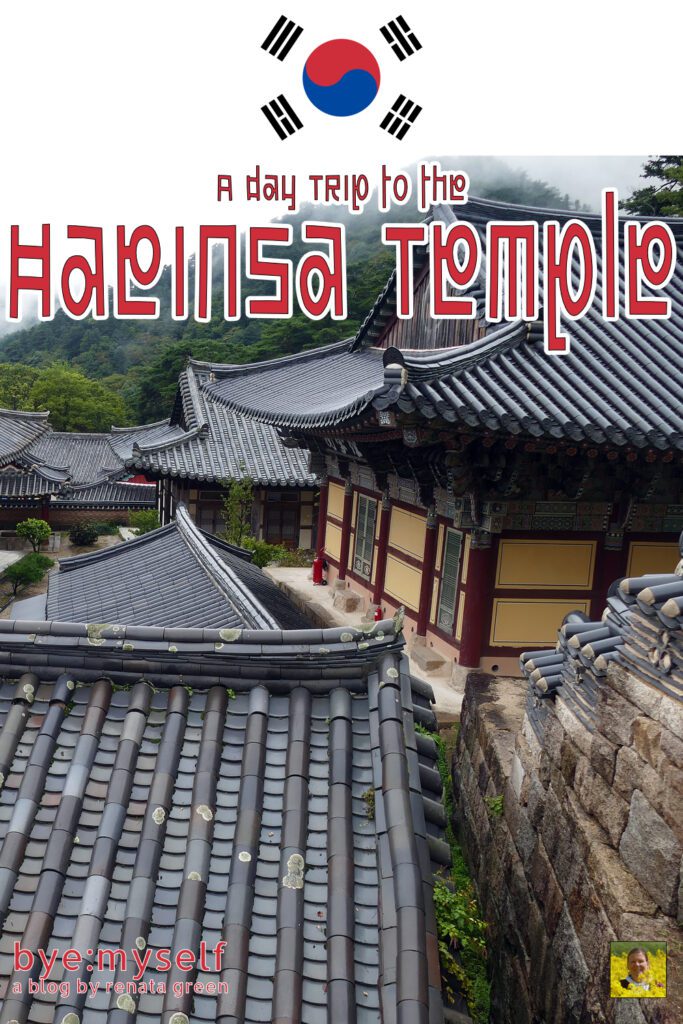
Note: I’m completing, editing, and updating this post regularly – last in July 2025.
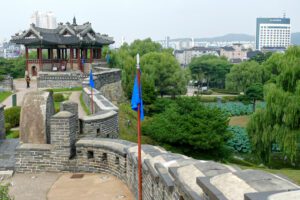
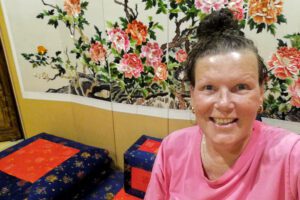
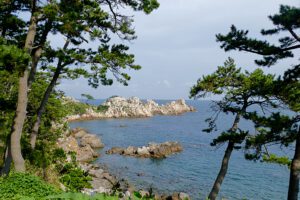
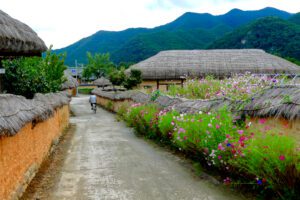
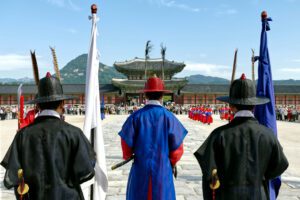
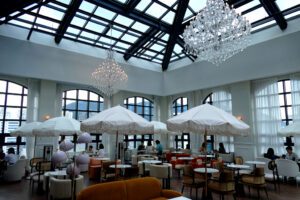
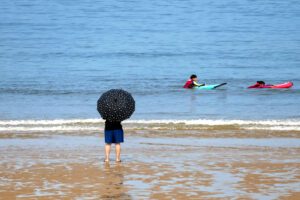
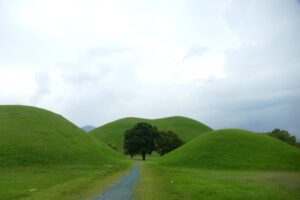
I have learned some important facts from your post. Thanks for this comprehensive guide to that important temple!
You’re welcome. The Haeinsa Temple is truly pure magic!